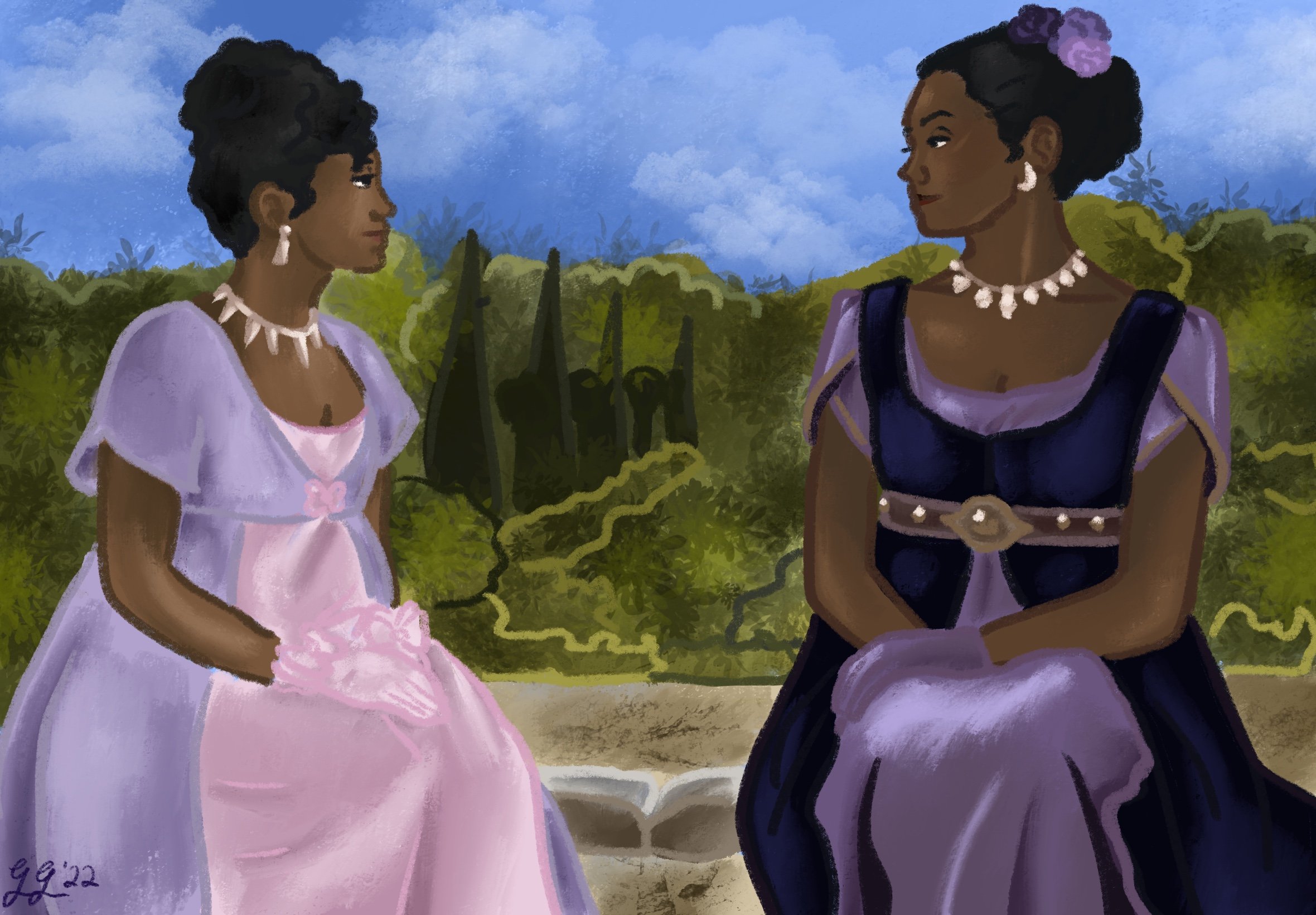By Jendayi Leben-Martin ’24
Staff Writer
Graphic courtesy of Gabby Gagnon ‘24
At the beginning of 2021, I wrote a review of the first season of “Bridgerton” in which I expressed that I was less than impressed with the series. However, the recently released second season has flipped my perception of the show, so much so that I’ve even been recommending it to anyone I can. Set in the early 1810s of England’s Regency era, this season turns its focus from Daphne (Phoebe Dynevor), the eldest sister of the Bridgterton family, to Anthony (Jonathan Bailey), the family’s eldest son. Through Anthony’s journey to wed, viewers are introduced to new characters and new schemes, all with the same “Bridgerton” magic.
This season approaches race differently than the last. The first season of “Bridgerton” used colorblind casting and relied on insufficient justifications to explain the historically inaccurate racial diversity of London’s wealthy social scene, as the show suggested that racism ended when the king married a Black woman, making her queen. The second season, however, takes more care in exploring the narratives of its characters of color. Enter Kate and Edwina Sharma (Simone Ashley and Charithra Chandran), two sisters from India who have come to London for the courting season in order to marry off the youngest sister to a “respectable” man. Though there are times when they express their distaste for London — often portrayed by Kate’s hatred for English tea — the show depicts the two girls and their mother using traditional South Asian practices, and the representation is refreshing.
Maahi Jaiswal ’24 spoke highly of the portrayal of a traditional wedding practice called a Haldi Ceremony, in which women rub turmeric on their skin.
“I definitely think in other media in the past, that’s made by Western directors, it’s portrayed as really messy and really dirty,” Maahi said, referring to the ceremony. “But I think the way they portrayed it was really nice because they were together as a family. … It seemed really beautiful and respectful.”
While I have no complaints about the racial diversity this season, the show’s creators seemed to have done away with what little LGBTQ+ representation they had. In the first season, Benedict (Luke Thompson), the second eldest Bridgerton brother, had an ambiguous relationship with a married, gay artist, which threw his morality into question. However, this storyline is completely ignored in the recently released episodes. Of course, it is not expected that every detail from one season follows into another, but this change feels purposeful and — similarly to how this storyline was dealt with in the first season — not very thoughtful.
The new episodes of “Bridgerton” are a much needed redemption from those of the last season. They give viewers the same slow-burn, period piece romance that was featured previously, but with a bit less of the hyped up horniness — a welcome change. While this season showed improvement in its handling of race, it’s still not enough to be the show’s main draw. If you’re looking for a love story with endless drama, unmatched chemistry and stunning wardrobes, this season of “Bridgerton” is a must-see.

